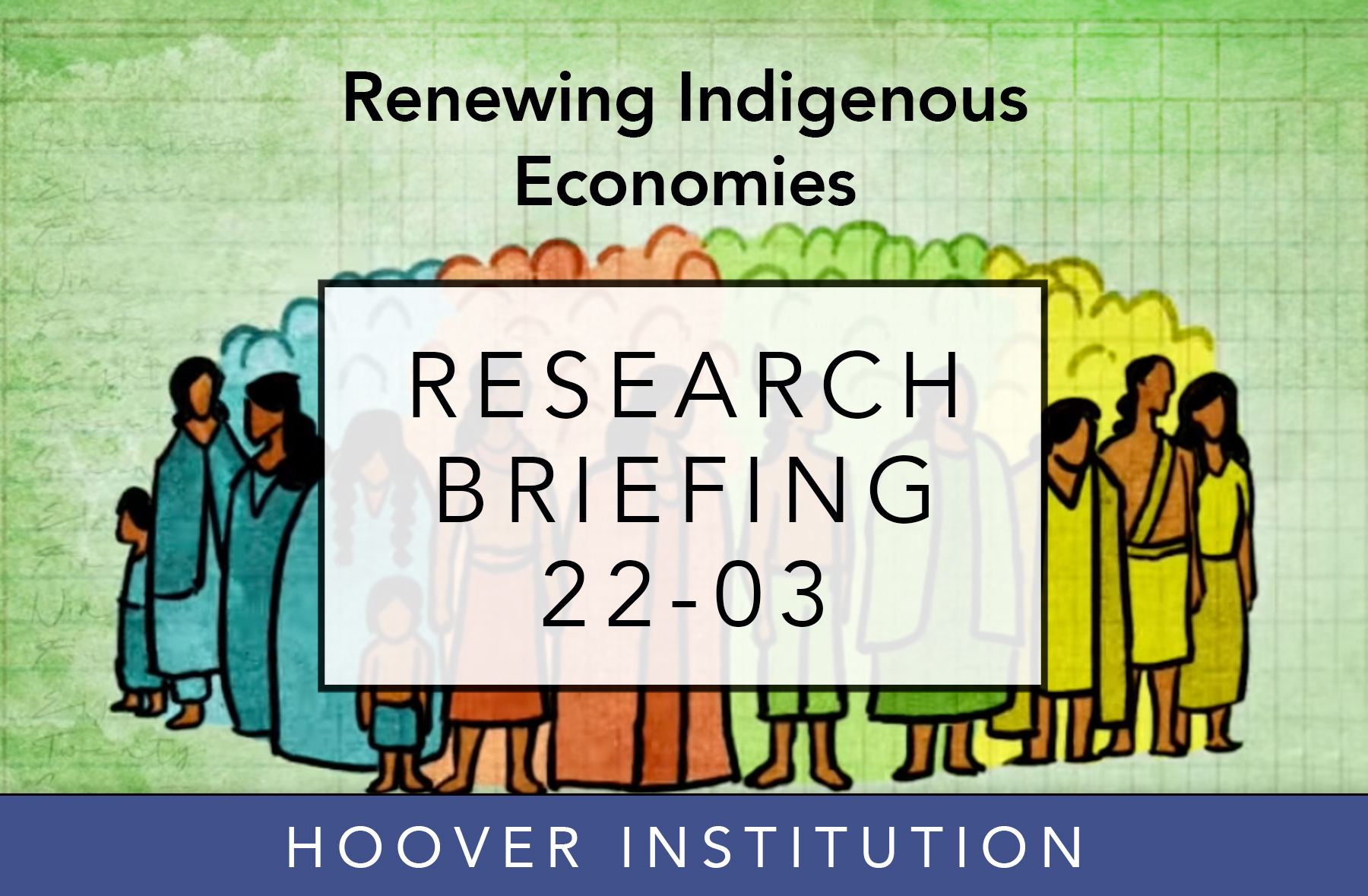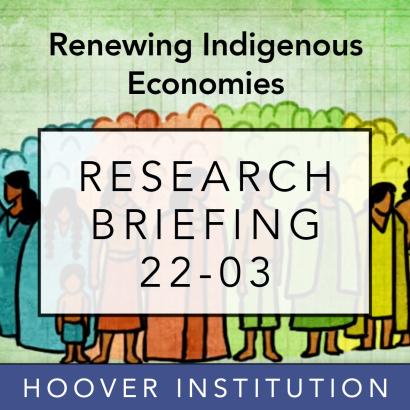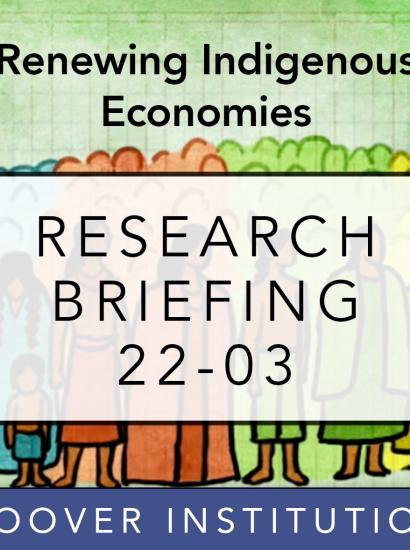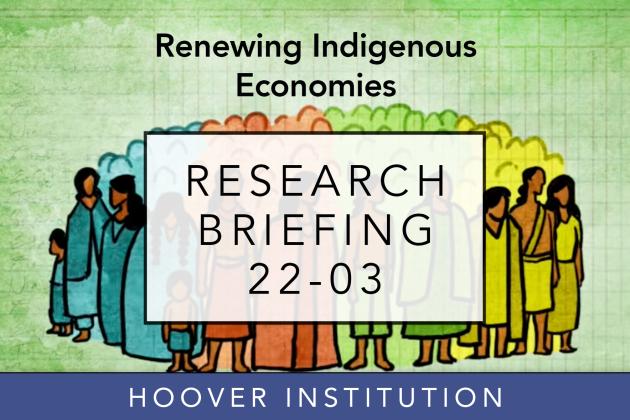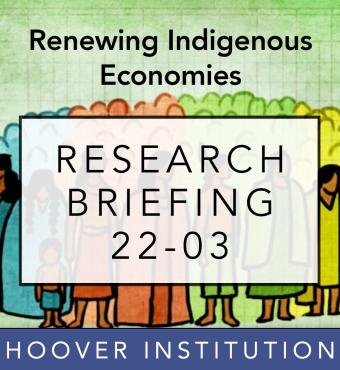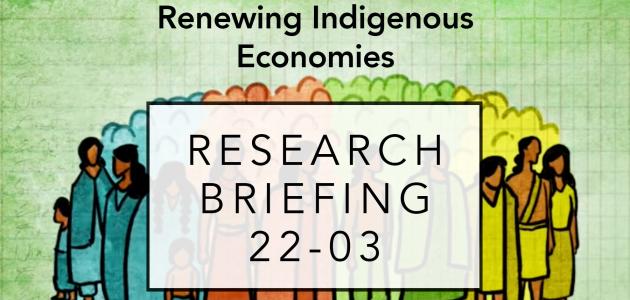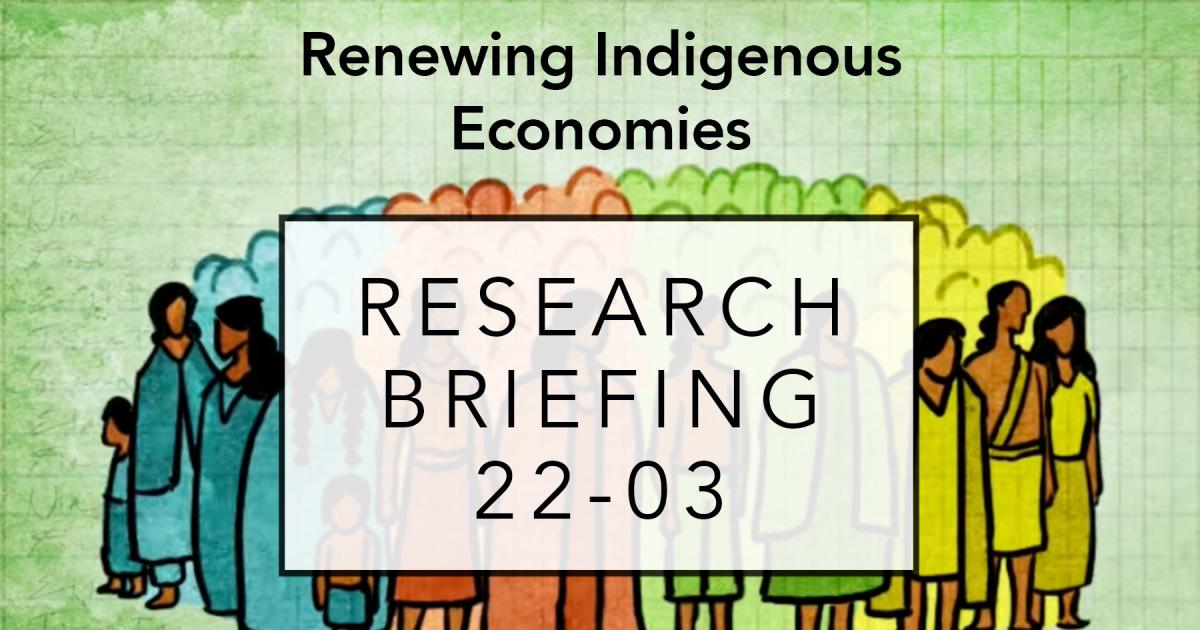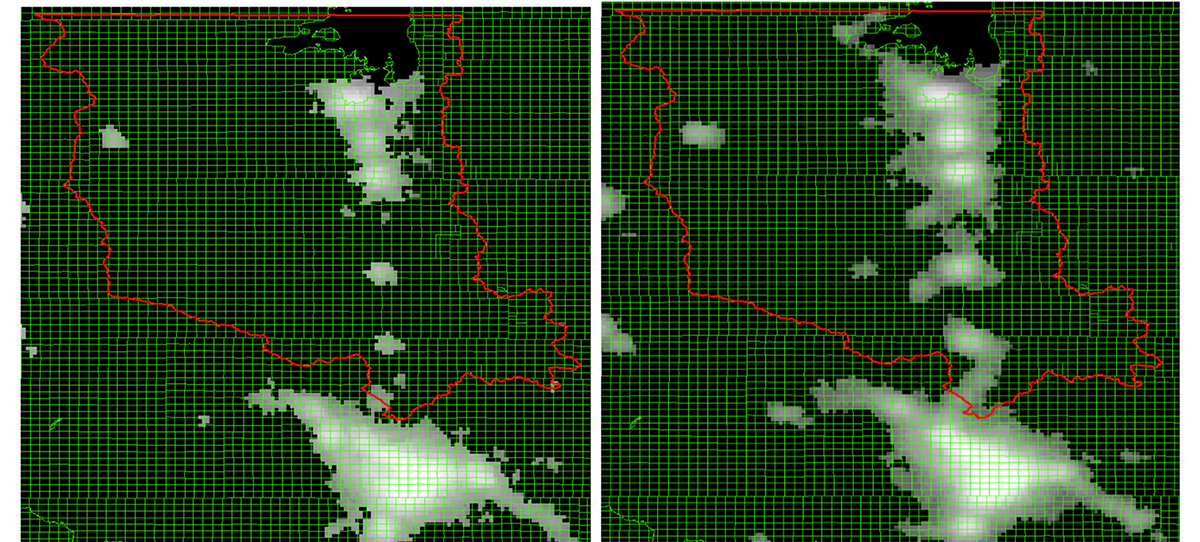
However, while it is typically presumed that secured transactions laws should follow a standardized template, the effects on growth may be strongest when tribes tailor the code to their own needs.
Based on Christian Dippel, Donna Feir, Bryan Leonard, and Marc L. Roark, “Secured Transactions Laws and Economic Development on American Indian Reservations,” American Economic Association (AEA) Papers & Proceedings 111 (2021): 233–37.
LESSONS FOR POLICY
- Tribes are increasingly adopting more uniform commercial codes to provide transparency and security for outside investors.
- Tribes can selectively adopt template laws that are tailored to their preferences, allowing them to enforce agreements in ways consistent with cultural norms.
- Adoption of tailored laws paired with the use of pre-existing state filing systems for recording transactions appears to yield the largest gains.
Economic Growth On Reservat... by Hoover Institution
The Research Problem
Many researchers attribute the relative dearth of investment and economic activity on American Indian reservations to uncertainty about tribal nations’ laws that govern financial transactions and how those laws are enforced. One proposed solution is for tribal nations to adopt secured transactions laws (STLs) from a standardized template like the one used by state governments. STLs create security interests (i.e., collateral) on personal property to support obligations owed by one party (usually an on-reservation debtor) to another (usually an off-reservation creditor). Tribes could further streamline the process by integrating their recording of transactions into their states’ filing systems to make the process more familiar for investors.
Adopting uniform STLs is seen by some tribal members as undermining tribal sovereignty. However, tribes may selectively adopt some, but not all, features of the uniform commercial code that best match their cultural norms. This raises several research questions: Does the adoption of STLs increase economic activity on reservations? Are the effects diminished or enhanced when tribes customize the code or adopt state filing systems?
What We Examined
We assessed the history of 62 tribal adoptions of STLs to investigate whether they promote economic activity and if adopting selectively tailored laws is an alternative to adopting more uniform text for spurring economic growth. We also explored whether the adoption of a state filing system changes the effects of adopting an STL.
Following Roark (2020), we classify STL adoptions as ``uniform” if a tribe adopts uniform text with no modification and ``selective’” if a tribe adopts modified text to limit the type of entity or the types of transactions for which the laws will apply. For example, a selective adoption might limit the application of code to tribally owned enterprises or specify that the code only applies to sales of accounts. Over the study period, from 1992 to 2012, the number of tribes with STLs grew from 6 to 62, with roughly equal numbers of selective and uniform adoptions.
Measuring the effects of STLs on economic activity is challenging, because annual economic data are not available for American Indian reservations. To overcome this problem, we utilized a data set that is often used in development economics to measure economic activity in other data-poor environments globally: satellite images of nighttime lights. These data enable the characterization of annual changes in economic activity within specific areas of each reservation—a major improvement over decadal reservation-level income measures available from the US census. As an example, figure 1 shows the evolution of night lights on Montana’s Flathead Indian Reservation from 1992 to 2012.

Fig. 1: Nighttime Lights on and around the Flathead Reservation 1992–2012. The left panel depicts nighttime lights on the Flathead Reservation (demarcated in red) and nearby Missoula, Montana, in 1992. The right panel depicts nighttime lights in the same area in 2012.
What We Found
Both uniform and selective adoption of STLs with integrated filing systems increased nighttime lights but with subtle differences. Selective adoption results in economic activity in previously unlit areas, suggesting it spurs entirely new development. By contrast, the adoption of uniform STLs resulted only in the intensification of light in already-lit areas, which is indicative of augmented economic activity in areas that were previously developed. One possible explanation is that selective adoptions are designed to benefit tribal enterprises and that these enterprises are more likely to be associated with new development in previously unlit areas. Selective laws that were paired with a state filing system appear to generate the best of both worlds, because these adoptions expanded economic development in already lit areas and led to new light, and thus economic activity, in previously unlit areas.
Author Affiliations
Christian Dippel is an economist at Ivey Business School at the University of Western Ontario. Donna Feir is an economist at University of Victoria. Bryan Leonard is an economist at Arizona State University. Mark Roark is a law professor at the Southern University Law Center. Dippel, Feir, and Leonard are 2019–20 Campbell Visiting Fellows at the Hoover Institution at Stanford University.







